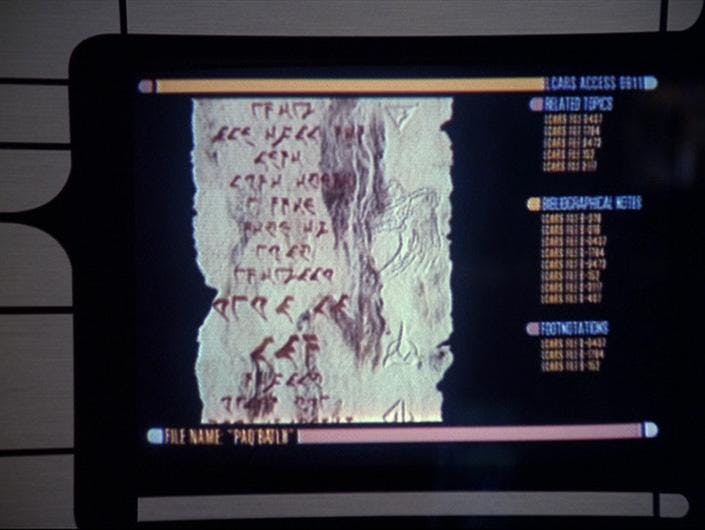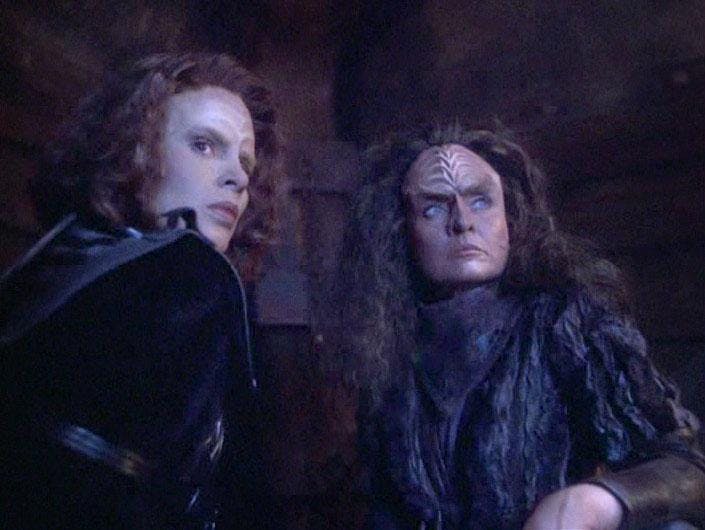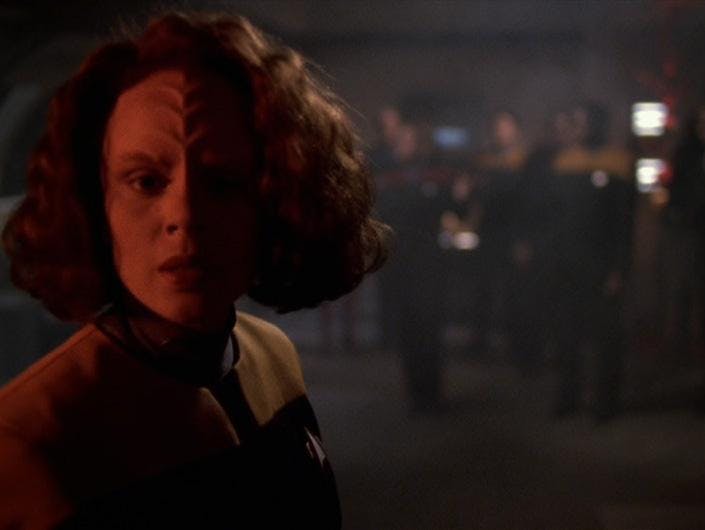Published Nov 6, 2013
One Trek Mind: A Look Back At Voyager's Journey To Hell
One Trek Mind: A Look Back At Voyager's Journey To Hell

When I meet a dismissive jerk who learns that I write a column about Star Trek called One Trek Mind they always ask “do you speak Klingon?” This is the socially acceptable way for an adult to give me a wedgie in public, I suppose.
I don't speak Klingon. (Well, I know a few words – for example, these annoying people are “p'taks.”) But when TNG, DS9 and Voyager were in mid-run I, like so many others, got more and more enthralled with the unique and rich Klingon culture. When a show's cold opening intimated that this would be a “Klingon one,” it usually meant you could rub your hands together and expect a meaty bite of delicious storytelling gagh.
This week marks the 14th anniversary since the first airing of -- in my opinion --one of the best “Klingon ones,” the B'Elanna Torres afterlife epic “Barge of the Dead.”
“Barge of the Dead” isn't just terrific because it serves up enormous flagons of bloodwine – although it is positively intoxicating with its copious Klingon lore. It's a great episode because it balances this with character development and because it is dares to bring up a topic that is very common in our modern world, but oftentimes glossed over on popular television: the debate of faith versus reason.
B'Elanna, out in a shuttlecraft hoping to retrieve a precious multispatial probe, gets banged around in an ion storm. Upon return she's told that a Klingon artifact wedged itself into her small ship. It's a major find way out here in the Delta Quadrant and, as such, the rest of the crew gets a little bit of “Klingon fever.” There's a special party planned and the Doctor and Seven of Nine are singing songs about Kahless (specifically about his defeat of Molor at the River Skral.)

Also, B'Elanna is hallucinating. She's hearing Klingon voices and seeing blood. (And Captain Janeway calls her “Lanna,” as her proud Klingon mother once did.) Tuvok tells her that the near death experience has jarred deep thoughts from her subconscious – but he's only partially right. Turns out she is experiencing “The Naj,” the dream before dying, and once visions of Klingon warriors shatter that dream, she finds herself on the Barge of the Dead (hardly a nice ship!) en route to Gre'thor (not a nice place!)
Gre'thor is “Klingon Hell,” the place where doomed and dishonored Klingons go when they die. “Barge of the Dead” wasn't the first time it was mentioned in Trek canon, but it was the first time it was so fleshed out. Indeed, by the time this episode is over you'll know how a soul can end up there (having dishonorable children is crime enough,) what dangers await along the way (the Kos'Karii sea beasts which lure you with false hope) and what needs to be done to change your eternal fate.
Some of this B'Elanna learns from reading a computerized version of the the ancient religious scroll the Paq'batlh when she is resuscitated by the Doctor. The rest B'Elanna intuits from the memories of her Klingon upbringing. An upbringing, mind you, that she has heretofore despised.

This is, ultimately, the heart of the episode. While mythos-fiends can dig on all this new backstory about Klingon culture, “Barge of the Dead” is B'Elanna Torres coming to terms with an identity she has long tried to suppress. “I inherited the forehead and the bad attitude. That's it,” B'Elanna says of her half-Klingon heritage. Making it more interesting is how, in order to pursue her new religious objectives (Tom Paris calls her a “Born-again Klingon,”) she needs to recreate her near-death experience at great personal risk to “rescue” her mother..

At first, Janeway disallows it – anything that puts her Chief Engineer in harm's way isn't happening on her watch, even if that makes her seem insensitive to cultural diversity. In time, though, Janeway recognizes that Torres is going to do this one way or another, she may as well support her, and let the Doctor run the experiment safely.
I really dig these sequences because it is clear that Janeway doesn't believe that B'Elanna is actually traveling to the Barge of the Dead. Frankly, she thinks she's nuts. However, she (and the world of Star Trek) is so enlightened that she is not compelled to pretend that she believes once she gives her go-ahead. She can be upfront about her skepticism in a way that is not condescending or combative. It's “hey, you believe this? Great. Let's talk about the practical implications.” This is Roddenberry's philosophy of tolerance writ large. Even when religion is the central issue, acceptance of other peoples' faith is no difficulty for those that are non-believers.
That may sound a little heavy – but this is one of the heavier episodes. And it's shot really well, too. The opening “Naj” sequences employ hand-held cameras and slow motion, something you don't see too much on your average Voyager episode. The extra effort pays off.

What were your first impressions when B'Elanna Torres took her trip on the Barge of the Dead? Leave your recollections below, lest you rot for eternity in Gre'thor. Q'aplaH!
__________________
Jordan Hoffman is a writer, critic and lapsed filmmaker living in New York City. His work can also be seen on Film.com, ScreenCrush and Badass Digest. On his BLOG, Jordan has reviewed all 727 Trek episodes and films, most of the comics and some of the novels.

